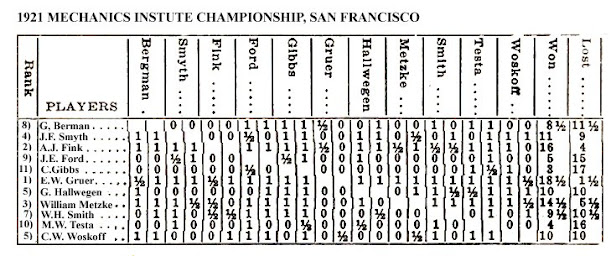The year 1927 saw Charles Lindbergh crossed the Atlantic in their first solo flight. The price of a man's racoon coat was $295 - $395. That’s the equivalent of $5,295 to over $7,000 in today’s purchasing power. Twenty-seven to thirty raccoons had to give up their lives to make one of these fur coats which were actually quite warm.
A man named Edwin Perkins invented Fruit Smack...we know it as Kool-Aid. You don’t see them much today, but they are still being used, the foot-measuring tool called the Brannock Device was invented by Charles Brannock. When it comes to measuring the feet for shoes it’s the gold standard device...it has a 96 percent accuracy.
The German Fritz Lang's silent film "Metropolis" opened to widely negative reviews, including one that accused it of portraying "foolishness, cliche, platitude, and muddlement about mechanical progress and progress in general." It was a science-fiction film about a futuristic city where a beautiful and cultured utopia existed above a bleak underworld populated by mistreated workers.
In 1927, the International Correspondence Chess Association was founded; it was replaced in 1946 by the International Correspondence Chess Federation (ICCF).
Efim Bogoljubov (1889-1952) was banned from the USSR because of his “bourgeois vice of putting his pocket book above his principles." He got the boot when he expressed his desire to give up his Soviet citizenship in order to be able to attend the tournament from which today’s game is taken
On January 15, 1927, David Janowsky (1868-1927) died in France of tuberculosis..
On March 14, 1927, Max Weis (1857-1927) died in Vienna. He had given up chess to pursue his banking career.
Jose Capablanca won the New York International; Alekhine took second. They agreed to play a match in Buenos Aires for the world title which Alekhune won with a +6 -3 =25 score.
The first chess Olympiad was held in London. There were 16 teams and Hungary took 1st. The first women's world championship was held London and the winner was 21-year-old Vera Menchik.
Bogoljubow didn’t get to plat in Merano which was won by Edgard Colle of Ghent, Belgium. Colle had participated in international events for several years with no special success until this tournament.
He was tied for first place after the semi-final round with Prepiorka of Poland, but the latter lost his last game to Gruenfeld while Colle drew with Sacconi.
The players in the following game were Stefano Rosselli del Turco, Marquis (18770 - 1947) who was the Italian champion five times and Poloish champion David Przepiorka (1880 – 1940). The Gestapo raided his apartment where some players were neeting and they were all arrested. The non-Jewish players were released, but Przepiorka and the other Jewish players weren’t and were subsequently executed.
[Event "Merano"]
[Site "Meran ITA"]
[Date "1926.12.18"]
[Round "?"]
[White "Stefano Rosselli del Turco"]
[Black "David Przepiorka"]
[Result "1-0"]
[ECO "B13"]
[Annotator "Komodo Dragon 3"]
[PlyCount "49"]
[EventDate "1926.??.??"]
{B13: Caro-Kann: Exchange Variation} 1. e4 c6 2. d4 d5 3. exd5 {The Exchange
Variation.} cxd5 {In recent times Vladimir Kramnik has developed some
9nteresting ideas in this line.} 4. Bd3 {The Panov-Botvinnik Attack (4.c4) is
the main alternative. It usually leads to typical isolated d-Pawn positions.
White obtaining rapid development, a grip on e5 and K-side attacking chances.
With 4.Bd3 white takes control of f5 so black can't play ...Bf5.} Nc6 {This is
the main continuation.} 5. c3 Nf6 6. Bf4 {White develops his Bs first. by
delaying Nf3 he avoids than annoying pin ...Bg4.} Bg4 7. Qb3 Qd7 {At Beograd
in 1970, Petrosian played the less effective 7...Na5 against Fischer.} 8. h3
Bh5 9. Nd2 Bg6 (9... e6 10. Ngf3 Bd6 11. Bxd6 Qxd6 12. O-O O-O {equals.
Hambleton,A (2420)-Hajiyev,K (2183) chess.com INT 2023}) 10. Bxg6 hxg6 11. Ngf3
e6 12. O-O-O {In more modern times white has played 12.Ne5 and 12.O-O.
Castling on opposite sides leads to a dog fight.} Na5 (12... Bd6 {is an
interesting alternative.} 13. Bxd6 Qxd6 14. Qxb7 Rb8 15. Qa6 O-O 16. Rhe1 Rb6 {
and black has slightly the better of it.}) 13. Qc2 b5 14. Ne5 Qb7 15. Kb1 Nc4
16. Rhe1 (16. g4 {has a greater impact.} Be7 17. Ndxc4 dxc4 18. Bg5 {hoping to
get in h4.}) 16... Ba3 {[%mdl 8192] This is a simple miscalculation. Black
probably expected 17.b3, but even then white would stand better. Correct was
16...Nxe5 and no matter how white recaptures the chances would be equal.} 17.
Ndxc4 dxc4 (17... bxc4 {opening the b-file is met by} 18. Qa4+ Nd7 {White can
capture either on d7 or a3. In either case there is nothing black can
accomplish on the b-file because of white's B.}) 18. bxa3 Qxg2 19. f3 Qxh3 {
Black has snagged a couple of Ps for the B, but they don't mean anything.
White now crashes through against black's K in the center.} 20. d5 {Of course..
.white finishes with a flair.} Nxd5 21. Rxd5 {[%mdl 512] The only followup
that wins outright. Other moves leaves white with the advantage, but not more.}
exd5 22. Nxg6+ Kd7 23. Re7+ Kd8 24. Bc7+ Kc8 25. Nxh8 {Black resigned. Near
perfect play by Rosselli del Tirco.} (25. Nxh8 Qxh8 26. Qf5+ Kb7 27. Qxd5+ {
mate next move.}) 1-0






















